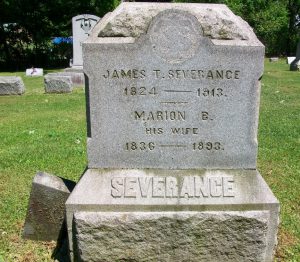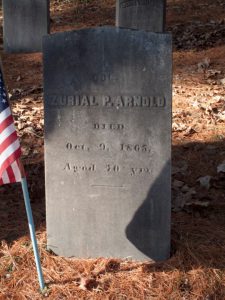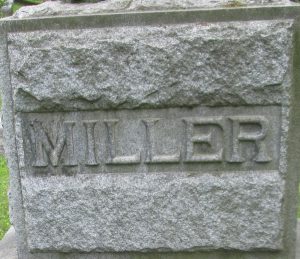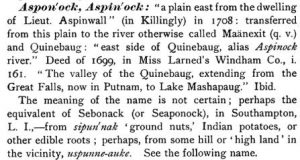 Reading Alicia Crane Williams’s post on Sex in Middlesex reminded me of another great work by Roger Thompson – Cambridge Cameos – Stories of Life in Seventeenth-Century New England, which contains forty-four sketches from the period 1651 to 1686. They are fascinating stories involving mostly ordinary people. Some of the more colorful chapters cover Brutality or Bloodsucking; Town versus Gown; Witchcraft or Madness; and A Subversive Physician. These vignettes are based on thousands of original documents Thompson examined that provide a rare chance to hear firsthand accounts of many seventeenth century New Englanders. Continue reading Cambridge Cameos
Reading Alicia Crane Williams’s post on Sex in Middlesex reminded me of another great work by Roger Thompson – Cambridge Cameos – Stories of Life in Seventeenth-Century New England, which contains forty-four sketches from the period 1651 to 1686. They are fascinating stories involving mostly ordinary people. Some of the more colorful chapters cover Brutality or Bloodsucking; Town versus Gown; Witchcraft or Madness; and A Subversive Physician. These vignettes are based on thousands of original documents Thompson examined that provide a rare chance to hear firsthand accounts of many seventeenth century New Englanders. Continue reading Cambridge Cameos
All posts by Christopher C. Child
What generation am I?

Following up on a post by David Allen Lambert on the question of identity, a semi-related topic involves the generation in the United States to which someone belongs. In my experience, this might mean something different for a genealogist belonging to a family long resident in America, as opposed to the child or grandchild of a recent immigrant.
My most recent immigrant ancestors were my great-great-great-grandparents Joseph Kelly and Rebecca Nelson, who came over from Ireland to Philadelphia in the 1840s and married there in 1850. Through that part of my ancestry, I would call myself sixth generation. I count Joseph and Rebecca as the first generation, and would describe it in a genealogy as follows: Continue reading What generation am I?
Two gravestones, one body

Finding two gravestones for the same person – particularly a widowed person who marries again, or perhaps moves further west – is something not uncommon in genealogical research. A gravestone may be inscribed with both parties’ names with the death date of the living party left empty for when their time comes. However, even when that year is filled in, don’t necessarily think both people are under the same earth. Continue reading Two gravestones, one body
One more!

An example of how a final spouse might be overlooked occurred when I was researching a “double Lippitt” spouse, Zurial Potter Arnold (1795–1865) of Eastford, Connecticut.[1] Zurial was married to two daughters of Moses and Anstress (Holden) Lippitt of Killingly, Connecticut. He first married Ann Lippitt in 1816; she died in 1823. He then married Ann’s sister Hannah in 1824. I found a reference to Zurial’s 1865 death on findagrave, which showed he was buried near a total of four wives, as also shown below in the Charles R. Hale Collection of Connecticut Cemetery Inscriptions. Continue reading One more!
The Miller sisters

Steven Weyand Folkers’ comment on a recent post – regarding a father and son both marrying women surnamed Miller, but from unrelated families – reminded me of a similar example in my own research several years ago with two Davis sisters who had married men named Miller.
This project started with trying to identify the children of Clark Davis (1803–1881) and his wife Philena Franklin (1811–1882) of Steuben County, New York. Continue reading The Miller sisters
Bye-bye-bye
 Following up on correcting the charts in my Seeing double blog post, the chart showing my ancestor Anna (Salisbury) Slade was a recent disappointment and involved removing some ancestors from my charts. The chart identified Anna’s parents as Daniel Salisbury and Anna Hale, and had Anna as the child of Rev. Moses Hale (Harvard 1699) and Mary Moody of Newbury, with several early Newbury ancestors including Henry and Jane (Dummer) Sewall, who were the parents of Judge Samuel Sewall (1652–1730), known for his involvement in the Salem witch trials. Continue reading Bye-bye-bye
Following up on correcting the charts in my Seeing double blog post, the chart showing my ancestor Anna (Salisbury) Slade was a recent disappointment and involved removing some ancestors from my charts. The chart identified Anna’s parents as Daniel Salisbury and Anna Hale, and had Anna as the child of Rev. Moses Hale (Harvard 1699) and Mary Moody of Newbury, with several early Newbury ancestors including Henry and Jane (Dummer) Sewall, who were the parents of Judge Samuel Sewall (1652–1730), known for his involvement in the Salem witch trials. Continue reading Bye-bye-bye
Seeing double
Another example of correcting mistakes on my family charts came in the example of “seeing double,” where there appeared to be two generations with the exact same names, which can often, but not always, be a sign something is not quite right.
In this case my great-grandfather’s great-grandmother Abigail (Slade) Fitts (1777–1874) of Ashford, Connecticut, was identified as the daughter of Jonathan Slade and Anna Salisbury. Their ancestors were continued on charts 12 and 13. However on chart 12, Jonathan Slade is also identified as a son of Jonathan Slade and Anna Salisbury. Was this really true? In this case, no. Continue reading Seeing double
‘Unbroken primogeniture’

An entertaining story about an American man claiming to be the rightful “King of Wales,” and a claimant as well to the throne of Great Britain, made the rounds last week after Allan V. Evans of Colorado posted a lengthy claim to the Welsh throne, noting the “injustice of history” that kept him from the British throne, to which he is heir by an “unbroken primogeniture line…”
Agnatic primogeniture dates back to early France and is known as Salic Law, where succession is obtained through kinship through the male line only. On a few occasions in France the king was succeeded by a distant male-line cousin, even when the deceased king had surviving daughters or sisters who had male children. Continue reading ‘Unbroken primogeniture’
“Algonquinization?”
 A friend from my hometown of Putnam, Connecticut posed a question on Facebook about what the word “Aspinock” literally means. Putnam was incorporated in 1855; in earlier years it had been known as Aspinock, but it was later named Putnam after General Israel Putnam of the Revolutionary War. Our local historical society remains the Aspinock Historical Society after this “original” town name. Continue reading “Algonquinization?”
A friend from my hometown of Putnam, Connecticut posed a question on Facebook about what the word “Aspinock” literally means. Putnam was incorporated in 1855; in earlier years it had been known as Aspinock, but it was later named Putnam after General Israel Putnam of the Revolutionary War. Our local historical society remains the Aspinock Historical Society after this “original” town name. Continue reading “Algonquinization?”
Fudging facts

Alternate dates of birth for our ancestors, perhaps ranging over several years, are common for many of us, and the reasons can vary considerably. A recent example in my own research came in the form of a deliberate change of birth date, with the sole intention to make the subject appear younger than her husband. Continue reading Fudging facts
